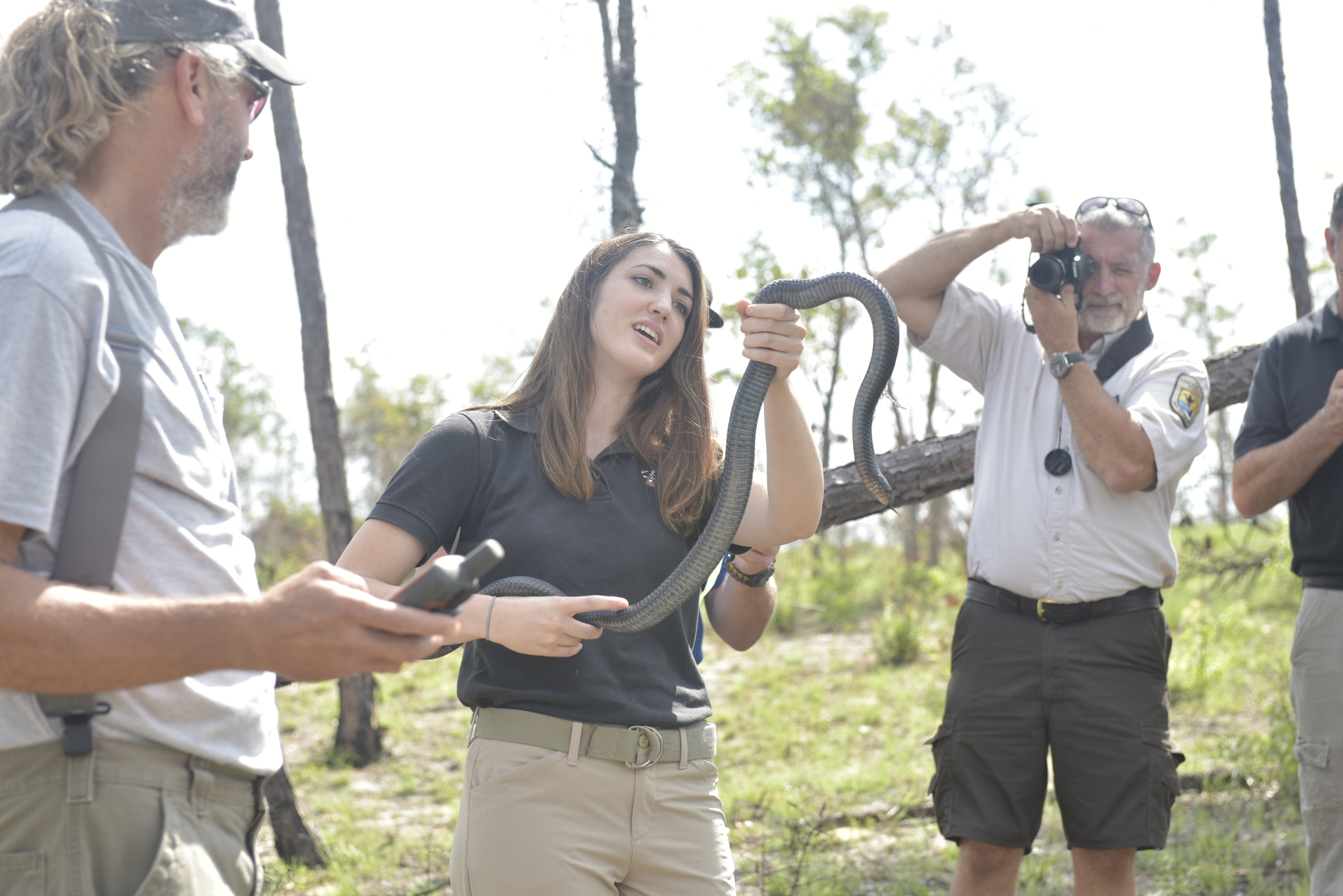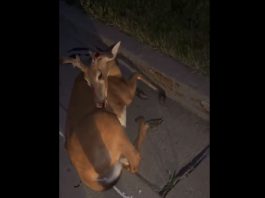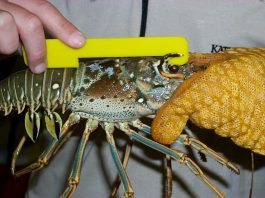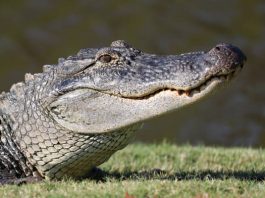
Florida — Fifteen eastern indigo snakes, listed as threatened under the Endangered Species Act, has just been released in northern Florida as part of a continuing collaborative plan to return the important, native, non-venomous apex predator to the region. This effort marks the third year in a row that snakes raised specifically for the recovery of the species have been released at The Nature Conservancy’s Apalachicola Bluffs and Ravines Preserve in Bristol.
The eastern indigo species recovery effort in north Florida is the long-term joint commitment of multiple nonprofit, agency and academic partners: The Nature Conservancy, the Central Florida Zoo & Botanical Gardens’ Orianne Center for Indigo Conservation, Auburn University, the Florida Fish and Wildlife Conservation Commission (FWC), U.S. Fish and Wildlife Service (the Service), Welaka National Fish Hatchery, The Orianne Society, Joseph W. Jones Ecological Research Center, Gulf Power, Southern Company through the National Fish and Wildlife Foundation, and the Fish & Wildlife Foundation of Florida. The partners have worked together for decades to restore and manage the habitat required by the snake, and many other species, to make the release possible.
The eastern indigo snake (Drymarchon couperi) is the longest snake native to North America and an iconic and essential component of the now rare southern longleaf pine forest. It serves a critical function to balance the wildlife community — it consumes a variety of small animals including both venomous and non-venomous snakes. At over 8 feet long, the impressive indigo often relies upon gopher tortoise burrows for shelter. The snakes were historically found throughout southern Georgia, Alabama, eastern Mississippi and throughout Florida, though their range is now far more restricted.
Following a recent investigation, a scientific study by Folt et al published in PLOS ONE firmly concluded that the eastern indigo snake is indeed one distinct species, and there is no current evidence to support splitting D. couperi isolated by location. Gene sequence data does not provide evidence to support two distinct species.
Largely eliminated from northern Florida due to habitat loss and fragmentation, the indigo was last observed at ABRP in 1982, until 2017 and 2018 when several dozen snakes were introduced to the preserve. This year’s annual release is part of a 10-year commitment to the species’ recovery and continues a focus on the establishment of healthy ecosystems through collaborative land, water, and wildlife conservation efforts.
“We continue our work throughout the state and at our preserves to create healthy habitats and properly functioning natural systems that support iconic and important wildlife and plants,” said Temperince Morgan, Executive Director, The Nature Conservancy in Florida. “With the third annual snake release and the teamwork of our dedicated partners, we’re moving the indigos in the direction of species recovery.”
ABRP is the only site in Florida currently designated for indigo reintroduction. The 6,295-acre nature preserve in northern Florida’s Liberty County protects a large longleaf pine landscape carved by numerous seepage streams and is home to the gopher tortoise and the full suite of longleaf pine specialists. Located in the Apalachicola Bay region along the Apalachicola River, the preserve lies in the center of one of five biological hotspots in North America and is home to a disproportionate number of imperiled species. The preserve is a living laboratory for the development of restoration techniques and land management excellence, dedicated to natural community restoration, preservation of biodiversity, and education and training.
Only 5% of the longleaf pine ecosystem remains globally. Over the past 30-plus years, The Nature Conservancy has employed science and technical expertise to develop the state-of-the-art groundcover restoration process that is now used by state, federal and private partners across the southeast to restore longleaf pine habitat. This restoration, combined with the Conservancy’s robust prescribed fire program, has resulted in improved longleaf habitat on over 100,000 public and private north Florida acres in recent years.
Longleaf pine restoration is also a top priority at places like the Apalachicola National Forest and Torreya State Park — both neighbors to ABRP and supported by the U.S. Forest Service and Florida Department of Environmental Protection.
The 15 snakes released at ABRP were bred and hatched by the Central Florida Zoo’s Orianne Center for Indigo Conservation, the world’s foremost comprehensive-based conservation organization dedicated to the captive propagation and reintroduction of the eastern indigo snake. All hatched in 2017, the 10 females and five males were raised for one year at the OCIC before transferring to the Welaka National Fish Hatchery for an additional year in preparation for their release. The snakes have been implanted with passive integrated transponders by the Central Florida Zoo’s veterinary staff to allow for identification when encountered after release.
“The Central Florida Zoo & Botanical Gardens and OCIC are proud to contribute to the conservation efforts of this spectacular species,” said Michelle Hoffman, Director, Orianne Center for Indigo Conservation. “By focusing on the captive propagation and reintroduction of eastern indigo snakes, we are able to progress toward our goal of reestablishing this species in the Florida Panhandle.”
The Welaka National Fish Hatchery, run by the U.S. Fish and Wildlife Service, is located along the St Johns River in Putnam County. Known primarily for striped bass, channel catfish and bluegill, the hatchery will soon begin raising at-risk Florida grasshopper sparrows and gopher tortoises, in addition to indigo snakes. Over the past 18 months, the snakes were fed a steady diet of dead mice, quail chicks and rainbow trout, and grew to about 4.5 feet in length before release.
“Raising snakes is not what you’d expect from one of our hatcheries, but it shows how the aquatics team can reproduce and grow critters — regardless if they swim or crawl,” said Leo Miranda, regional director for the Service in the Southeast. “We are also working tirelessly with partners to restore the longleaf pine ecosystem that nurtures indigo snakes and myriad of other threatened and endangered species.”
Auburn University’s Alabama Natural Heritage Program brings knowledge to planning reintroduction efforts and expertise in onsite monitoring of the reintroduced snakes. Data collected from the snakes that were released in 2017 and 2018 continues to inform species recovery efforts. The initial 32 snakes released were implanted with radio transmitters by veterinary staff at the Central Florida Zoo, which allow researchers to track the animals’ movements, habitat selection, and behavior. One of the eastern indigo snakes that was released in 2017 traveled over a mile from where it was initially released, and two previously released snakes were observed together in the same burrow earlier this year.
The monitoring program is supported in part by The Joseph W. Jones Ecological Research Center, whose mission is to understand, demonstrate and promote excellence in natural resource management and landscape conservation in the southeastern coastal plains.
The indigo reintroduction efforts are supported by grants and other funding, including a Conserve Wildlife Tag Grant from the Fish & Wildlife Foundation of Florida, funded through the purchase of Conserve Wildlife Florida license plates and designated for the conservation of nongame species and the habitats that support them.
“We are happy to be continuing this project with so many of our valued conservation partners this year,” said Kipp Frohlich, the FWC’s Director of Habitat and Species Conservation. “This release is another important step toward reestablishing a thriving population of this unique imperiled species in the longleaf pine forests of the Florida Panhandle.”
Additional funding to support the reintroduction has been provided by Gulf Power and Southern Company through the National Fish and Wildlife Foundation.
The Orianne Society was integral in the creation of the OCIC and the indigo snake reintroduction team and continues to play a role in reintroducing eastern indigo snakes into places they no longer occur. The Society works to conserve critical ecosystems for imperiled reptiles and amphibians, using science, applied conservation and education.
“With three years of releases under our belt, we are now looking forward to seeing evidence of reproduction on the Preserve. I can hardly wait!” said David Printiss, North Florida Program Manager, The Nature Conservancy in Florida.
Throughout the state, the Conservancy continues to pursue conservation projects and support policy that protects natural systems for people and wildlife. Next year’s snake release will be scheduled for summer 2020 — stay tuned.






